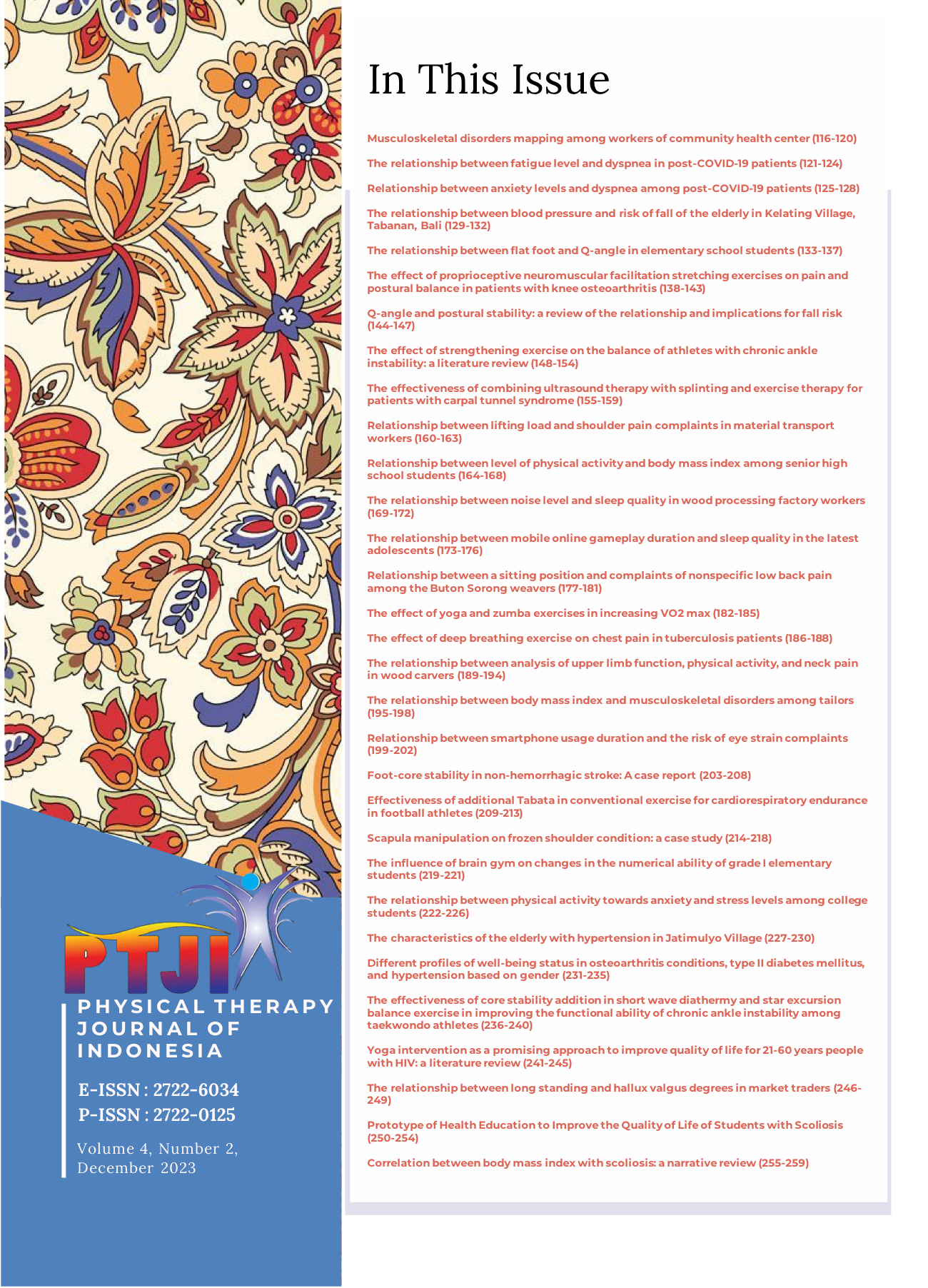Correlation between body mass index with scoliosis: a narrative review
Abstract
Background: Body mass index (BMI) is a score that is assessed by a person's weight in kilograms divided by height in meters squared. If a person does not maintain a normal BMI and activity frequency, it will impact various disease risks, including bone problems, one of which is scoliosis. Scoliosis is a disorder that causes an indentation in the vertebrae or spine in the form of sideways or lateral deviation. This study aimed to determine the relationship between body mass index and scoliosis.
Methods: This study used a literature review study method or literature review from five English-language journals that were relevant to the relationship between BMI with scoliosis. The journal searched Google Scholar, PubMed, and Pedro with the keywords “Scoliosis,” “Body Mass Index,” “Spine,” “Correlation,” and “Relationship.”
Results: From five studies discussing the relationship between BMI with scoliosis, it was found that all journals showed a relationship between BMI with scoliosis. This is associated with several factors, such as gender, diet, and others.
Conclusion: Based on the literature that has been collected along with the previous discussion, it can be concluded that there is a relationship between BMI and scoliosis.







3.gif)

